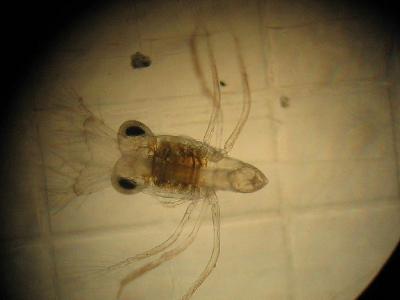-
Posts
10,123 -
Joined
-
Last visited
-
Days Won
17
Content Type
Profiles
Forums
Gallery
Everything posted by FuEl
-
Greatest obsession of all time..I wonder when I can get to keep one.. Must start saving Black-headed python
-
Sell the cars..come to Canberra in Aussie..and do weed production as a sideline while you study.
-

Mainebetta's Amphiprion percula - first spawn
FuEl replied to marinebetta's topic in General Reefkeeping_
Hmm..how's the roti doing? Better survival rates with larvae? -

No contest for Singapore's Presidential poll
FuEl replied to koniyakutz's topic in General Reefkeeping_
Oh well...I guess we are all rather brainwashed in a way. Speaking out in a "democratic" society can have consequences. I salute Kuan for his bravery to run for presidency. -

Falling in love again in his twilight years ...
FuEl replied to lizard44's topic in General Reefkeeping_
Bless your friend...frankly I don't have a good opinion of Sg girls in general. Not being sexist but I find them too stuck up, demanding and materialistic. Vietnamese chicks I met don't exhibit any of these...gotta be one of the sweetest group of ladies you find in Singapore. Ask your friend to go Vietnamese..he won't regret it.. -

some questions regarding soft corals & zooplankton
FuEl replied to angmoh's topic in Soft Coral Forum
1) Don't dose zooplankton. Most available forms are dead..being frozen or preserved. Water quality can be a problem even if slight overdose occurs especially in a 2ft tank. If you underdose, it's as good as not dosing as the efficiency at which the corals can catch zooplankton depends on the zooplankton density in the water. If you want live zooplankton, just dose phytoplankton and natural zooplankton blooms will occur in your tank. Live phytoplankton would be best as it will not deteriorate your water quality. 2) If you mash the prawn..your corals might take it. Different types of mushrooms have different ways of feeding. Some can trap and ingest large pieces of food while others either trap smaller particles or they absorb dissolved organic matter (D.O.M) from the water. Buttons rely mainly on light and D.O.M. As for goniopora no one knows for sure what they require in captivity. 3) Larvae of all crustaceans, molluscs and even fish...can be food for corals. LPS can catch these easily. As for your corals you are keeping, their prey capture ability (if any) is not as strong as LPS. 4) Dump the zoanthid. It has been infected with pest nudibranchs. These feed on the zoanthids. You could try a freshwater dip if it's an expensive specimen but if it's a normal one I suggest you dump it. Almost impossible to get rid of every nudibranch and every egg and chances of the nudis coming back are high. -
Think he either means a refugium or an algae scrubber, depending on what suits your needs.
-
Nah...just real determined to make some breakthrough with this species and hopefully shorten their larval duration to less than 2 months...as in captivity for speculated reasons they delay metamorphosis till 3-4 months..most die before reaching settlement. Many scientists speculate it to be possible. Mainly they attribute it to reasons like aeration trauma, tangling with debri/other individuals and nutrition. So I'm just working on ways to reduce these 3 main causes of mortality. Now I found out that they can reach zoea II on phytoplankton, guess it more or less shows that they can consume phytoplankton actively. Just left to test which algae species is best. Going to try 2 types of system design next. One is an recirculating upwelling system with overflow..another is a modified static kreisel system..using air to circulate the water via surface movement..with a central bottom drainage.
-
Had some interesting find today..seems that early Lysmata larvae do consume phytoplankton. Those fed phytoplankton initially seem to be more tolerant of physical stress and they appear to be more active than those fed rotifers or Artemia straight after hatching. No scientific papers on this though..I might be onto something.. Scrapped the experiment on Day 3. Will be devising a more accurate one for statistical analysis to be possible. Day 3 of flawed experiment (no replicates for control, need more individuals per replicate..only had 10 larvae per 2-L flask replicate) 1) Control (Unfed)- all larvae remained in zoea I stage..survival 80% 2) T-ISO fed at concentration of 30750 cells/mL Replicate 1 = 100% survival..all in zoea I Replicate 2 = 100% survival.. half in zoea I..half in zoea II Replicate 3 = 100% survival.. 9 in zoea I.. 1 in zoea II Tested T-ISO concentration in replicate 2.. declined from 30750 cells/mL to 18000 cells/mL. Active ingestion seems highly possible. Replicate 2 was directly under light..microalgae might have increased in concentration during the photoperiod. Replicates 1 and 3 received less light. Next experiment will be using higher microalgae concentration. Hoping to test 3 species..T-ISO.. Tetraselmis (the species used by Wakiki aquarium in Hawaii).. and Chaetoceros. Hope all goes well..
-
Hmm...still possible..depending on the moult frequency of the shrimp. Shrimp can only pass eggs to their setae located on their swimmerets after they moult. So if your shrimp moulted less than 3 times within 3 months...they should have been egg bound for less than thrice...meaning they still got enough sperm stores. It is highly likely to be either the pistol shrimp or the marble shrimp that released the larvae. Blood shrimps if fed daily and to satiation will moult and release larvae once every 2 weeks. Get another blood shrimp? You'll get to see larvae every 2 weeks from alternating shrimp.
-
-
-
Shrimp can store sperm for subsequent spawns. Normally a stored single spermatophore can fertilize 2-3 clutches of eggs.
-
Wah..such an old post...repost a new topic lah..
-
Nah..not worth the risk..the broodstock already been here for awhile. My first batch not doing that well..today's day 9...although some reached zoea IV but today I checked survival..only around 48%. 2nd batch might do better as I'm currently doing another experiment to determine their diet. It does seem that immediate availability of phytoplankton after hatching plays a major role in the natural diet composition of L.amboinensis larvae. Not statistically tested yet though...that's where the headache will come..I hate statistics....
-

What is the most unhealthy food you've ever eaten?
FuEl replied to blueheaven's topic in General Reefkeeping_
Super salted french fries...and lots of the black burnt stuff you get on your barbeque items.. -
Good idea...get to swim with great white sharks too..
-
Zoea II. Note that coloration has started to take over. Hard to take the whole animal..especially when it's through a microscope lens. Anyway..main morphological change is the stalked eyes. Oh well..will add more pics soon..if the larvae don't die on me that is. Notorious for mass mortality around week 2.
-
Been rather busy with my experiments..just some larval photos I thought I should share. Lysmata amboinensis zoea I Note the tail has curled under the body after I killed it with formalin. Real irritating side effect of formalin.
-
Yea..you might be right. I wondered why they put moon crabs in the same tray as larger mud crabs for my prac..maybe the juveniles look too similar between the 2 species?..Or were they indeed meant to be displayed as 2 species? Oh well..I'm not so sure myself..never seen a photo of a juvenile mud crab myself..
-
Any digital timer.
-
Not advisable to frag it as they burrow deep into Porites. Fragging can easily damage their burrows and very likely the worm itself. Unless you use high end technology like xrays, ultrasound scans and laser cutting equipment.. As iantoh has mentioned phytoplankton should be fed regularly to these animals. If you do not want to risk water issues you can always immerse them in an external solution of phyto. There's not much studies being done on the relation between the health of Porites and the subsequent survival of the worms. Nevertheless you can never go wrong by following mother nature and take steps to ensure the coral survives.
-
Does'nt shift sand. It's one of the smallest members of the Enoplometopus genus. There's another species commonly available and it's E.occidentalis. This is a larger species and not as reef safe as E.debelius.
-
It's a mud crab (Scylla sp.). Raise one from juvenile to adult and you will see the change.
-
Good idea to tilt the display tank while having a sump below. Using timer and powerheads to simulate tidal changes. You can observe their natural behavior then.






